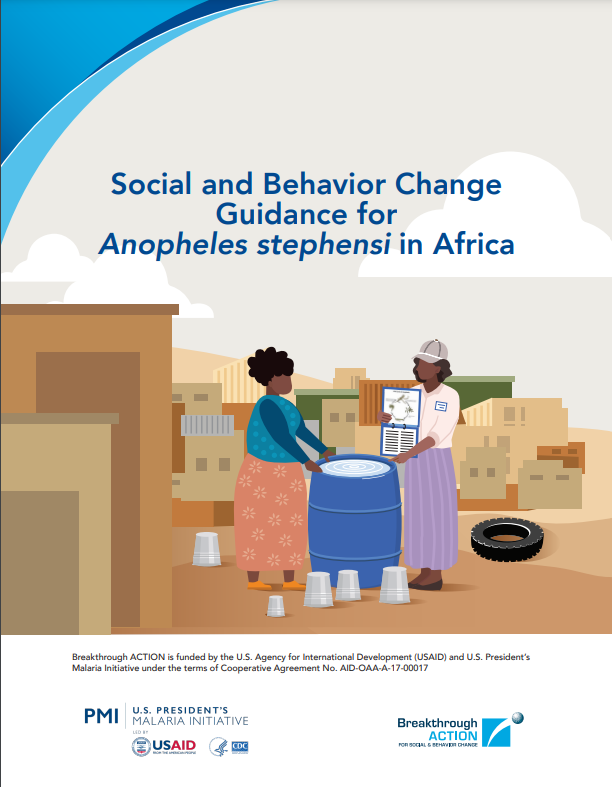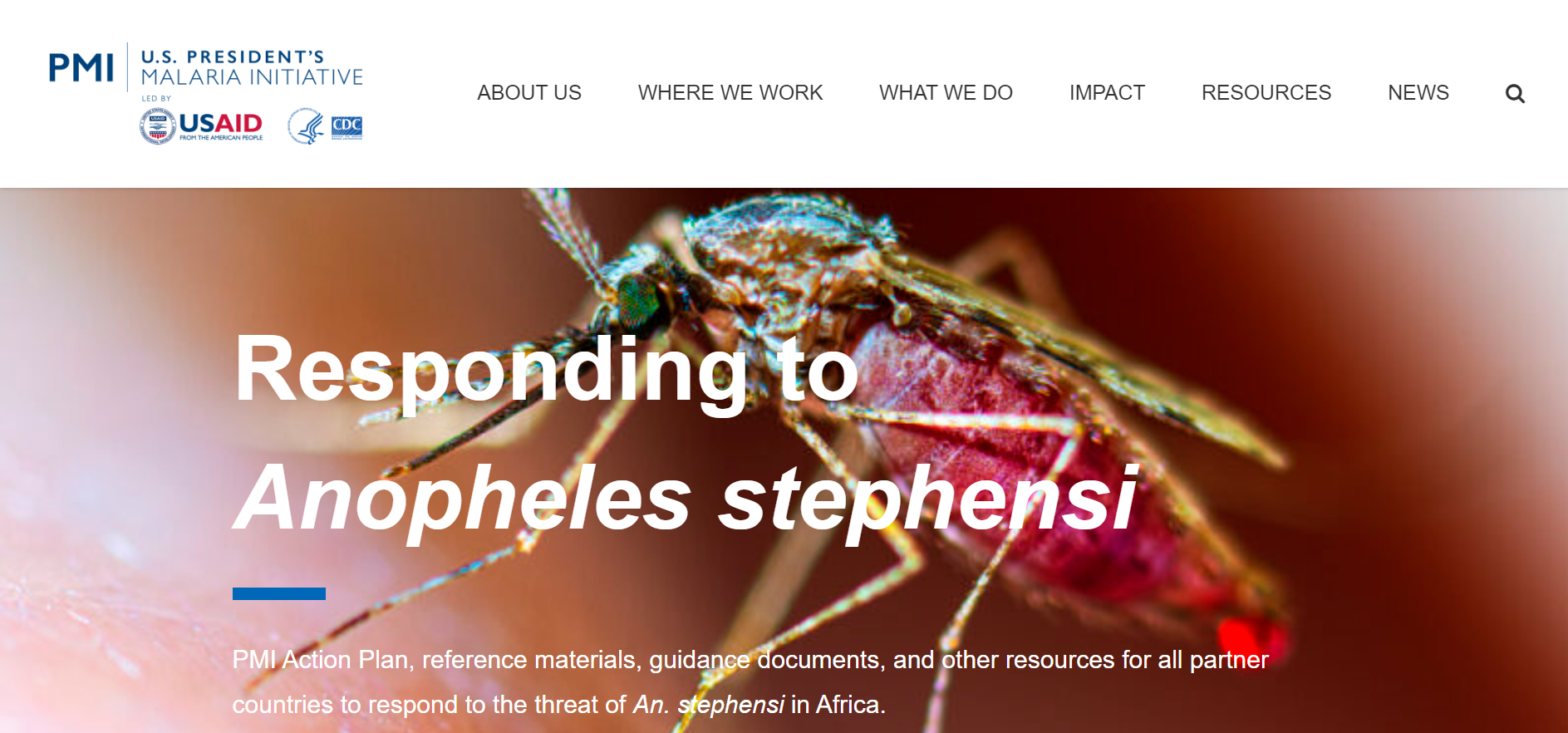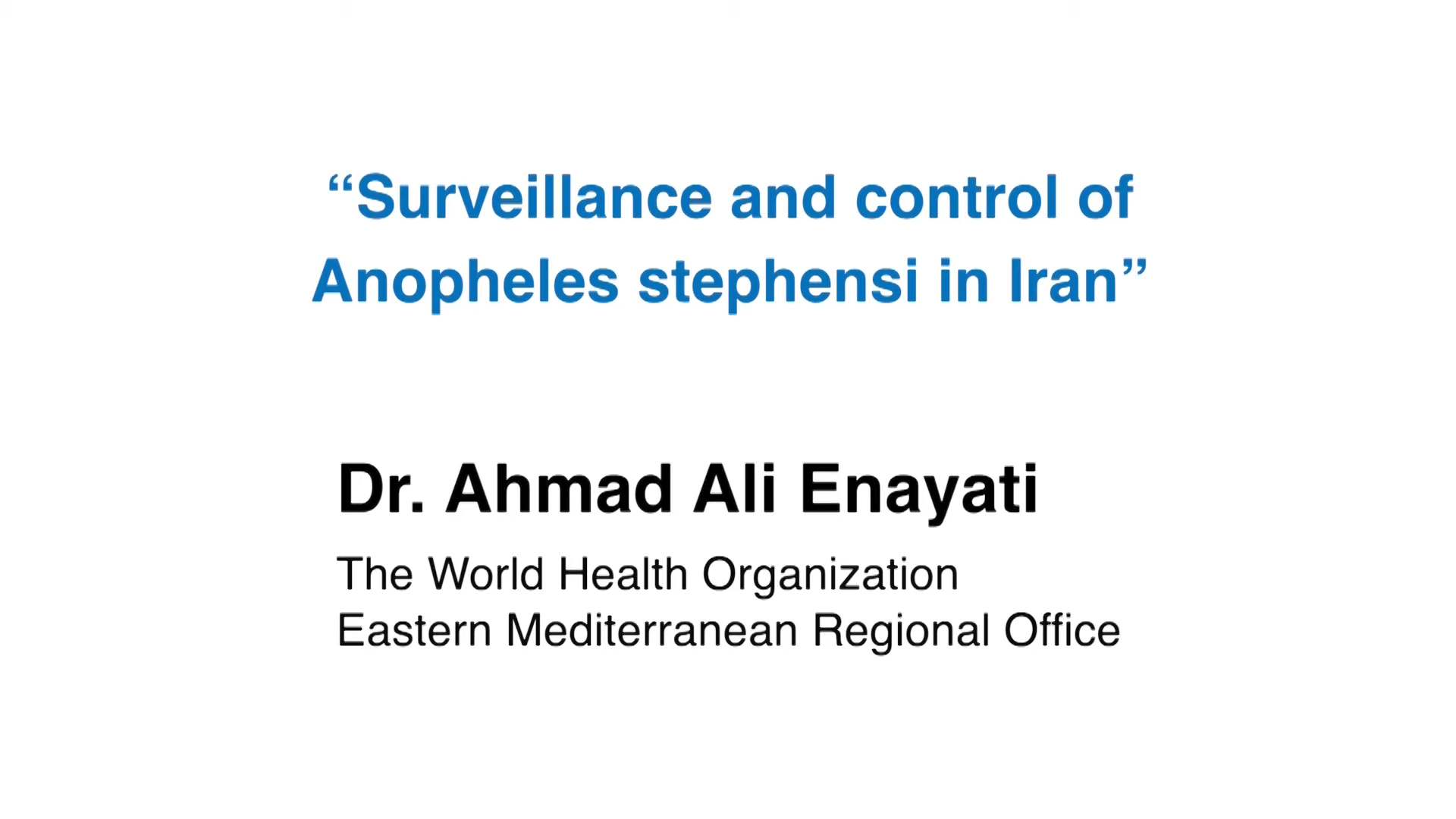Social and Behavior Change Guidance for Anopheles stephensi in Africa
Collaborator(s): Johns Hopkins Center for Communication Programs (CCP), United States; U.S. President’s Malaria Initiative (PMI), United States
Social and Behavior Change Guidance for Anopheles stephensi in Africa
Anopheles stephensi, a dominant malaria vector in south Asia and Arabian Peninsula, has been identified in Africa in recent years, and has the potential to threaten malaria control and elimination efforts. Unlike malaria vectors in Africa that use natural habitats, An. stephensi shares some similarities with Aedes aegypti, a vector of diseases such as dengue, Zika, chikungunya, and yellow fever. These similarities include a preference for developing in artificial containers, such as water storage containers, particularly in urban areas. Social and behavior change (SBC) approaches to promote evidence-based individual, household, and community behaviors to reduce An. stephensi populations should play a critical role in the response to this growing threat in Africa.
As countries face the threat of invasive An. stephensi, ministries of health will need to define their response, which may include the scale-up or introduction of interventions such as insecticide-treated nets, indoor residual spraying, care-seeking for fever, household larviciding, community larviciding, regularly finding and removing standing water, and covering water storage containers. The response to An. stephensi should include a corresponding SBC strategy developed to promote the specific interventions selected and associated behaviors.
This document provides guidance on the individual, household, and community level behaviors for potential support of An. stephensi mitigation and control interventions in Africa. While it is outside the scope of this document, malaria SBC strategies should consider interventions at the structural level (i.e., interventions outside the control of individuals, households, or communities), including access to malaria services and quality of services provided. Specific guidance on SBC approaches for malaria service communication and health care provider behavior change can be found in A Blueprint for Applying Behavioral Insights to Malaria Service Delivery.
THEMES: Social Science


